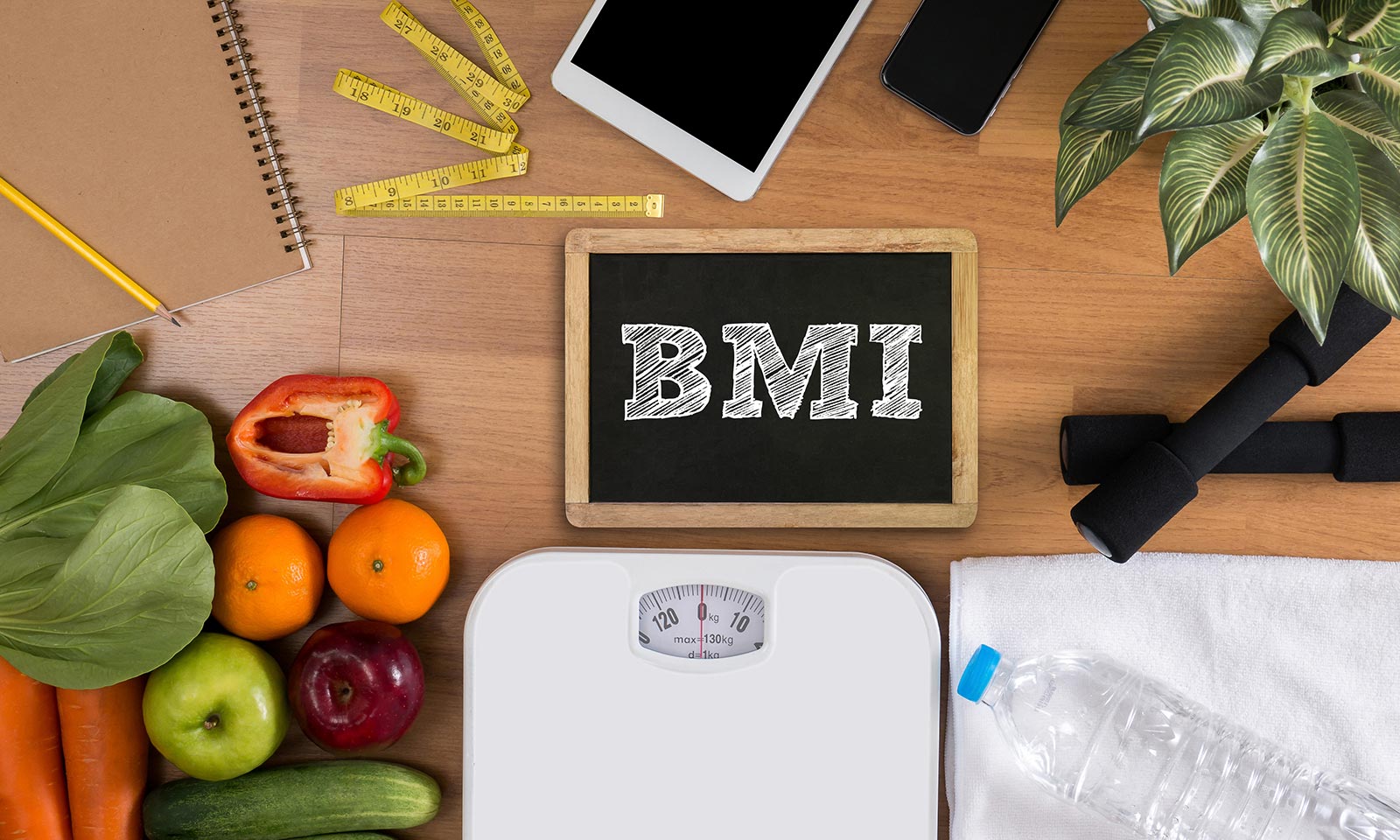How To Calculate Your BMI, And What It Is Used For

|
|
If you ever visit the doctor, either for a specific reason, or simply for a routine check up, one of the first things that they may measure, is your BMI. Your BMI stands for your Body Mass Index, and as well as being a very important component in terms of health, it is also often taken into consideration in terms of fitness as well. As many people’s diets are unfortunately lacking in vital nutrients and natural goodness, along with the fact that more and more of us are leading an increasingly sedentary lifestyle, and we are placing too much emphasis on fast food and convenience food, our health is taking a bit of a battering. Life expectancies are currently getting lower instead of higher, which, when you consider the advances in nutrition, technology, and modern medicine, is absolutely astonishing. Not only are children born in the next generation, actually predicted to have shorter life expectancies than their parents, but they are also far more likely to become obese, and to develop a whole host of chronic illnesses and medical complaints. By calculating your BMI however, you are giving yourself a great chance of gauging your physical fitness, as well as being able to calculate just how much body fat you are currently carrying.
The basic premise behind a BMI, is to calculate how much fat a person is carrying, and just how far they are off from their ideal weight. For example, if a person has a high BMI, they will be more at risk for suffering from health conditions that are caused as a result of a person being overweight. Hypertension, type 2 diabetes, heart disease, and even forms of cancer, can be caused by, and exasperated by, being overweight. Your BMI gives you a rough indication of where you are, and where you need to be. Here we’ll be taking a more detailed look at calculating your BMI, the advantages it has to offer, and the disadvantages it has to offer.
- What should your BMI be?
- How to calculate your BMI
- Using online tools
- Simple equation
- What are the advantages of working out your BMI?
- Prevent illness and disease
- Gauge your physical condition
- How about the disadvantages
- Not 100% accurate
- Height is also a factor
- Different types of fat cannot be identified
What should your BMI be?

Your BMI is basically calculated by taking your height into consideration, along with your weight. Your weight will be divided in KGs, by your height, which will be measured in metres squared. According to the world health organization, also known as WHO, if your BMI is between 25 and 29.9, you are classed as being overweight. If however, your BMI is 30 or above, you will be classed as obese. The higher above 30, the more likely you will be of being classed as morbidly obese. A healthy BMI however, is between 18.5 and 24.9. If your BMI is in this range, you are classed as being in the optimal category, which means that, statistically, your chances of suffering from chronic disease or various other weight-related ailments, will be significantly reduced. You should however, be wary of dropping below 18.5, as if you drop too low, your health will also be at risk, due to you being underweight, instead of overweight, which can also provide a whole host of health issues.
How to calculate your BMI
Now that you know a little more about what your BMI is, and why it’s important to maintain a healthy BMI, your next step will be to find out how to effectively and accurately calculate it. In reality, there are a few different methods of calculating your BMI, so let’s take a look at a few of the most common and most accurate.
Using online tools
Thanks to the wonders of modern technology, specifically the internet, we now have a number of online tools, and indeed, smart apps, that can be used to provide accurate BMI readings. In order to use these calculators, you will be required to manually enter some simple information about yourself, including: gender, your age, your weight, and then your height. From here, you will then click ‘calculate’ or something similar, and in a few seconds, you will then be met with your BMI on screen. Different countries actually have different calculators with different units of measurements, so if you find a calculator with measurement units that you aren’t familiar with, simply do a quick search and find a different one with ones that you do get on with.
Simple equation
What did we do without modern technology? Ah, yes, we did things the old fashioned way, and actually used our brains instead. Say for example, you don’t have access to the internet or a smart phone, or say that you simply want to keep your brain sharp, you can actually work out your BMI the old fashioned way, by using a simple mathematical equation. As mentioned, to calculate your BMI, take your weight in KGs, and divide it by your height in metres squared. If you wish to work it out in pounds and inches, simply use a conversion factor of 703. So, take your weight in pounds, divide it by your height in inches squared, and then take the total number, and multiply it by 703. That will then give you the magic number. So:
BMI = your weight in pounds / height in inches x 703.
What are the advantages of working out your BMI?

Doctors and medical professionals have been using BMI readings for many years now, in order to gauge a patient’s physical fitness and health, and also as a preventative tool in the process. Here we’ll begin by taking a look at some of the primary advantages of working out your BMI.
Prevent illness and disease
One of the primary benefits of working out your BMI, is the fact that it could function as a very effective preventative tool. For example, if your BMI is high, you will be significantly more at risk of suffering from chronic illness and disease, than somebody with a healthy BMI. Being overweight can lead to all kinds of health issues, including: High blood pressure (hypertension), renal failure, stroke, cancer, heart disease, heart attack, type 2 diabetes, depression, auto-immune disorders, and much more besides. By calculating your BMI however, if yours is too high, you know right away and you can then take the necessary steps to get it back down into the healthy range, therefore preventing these illnesses and ailments before they occur.
Gauge your physical condition
Another benefit of working out your BMI, is the fact that it allows you to gauge your physical condition so you can get a better understanding of just how much fat and additional weight you are carrying, and how much you will need to lose, or possibly even gain.
How about the disadvantages

Like most things in life as well as offering a number of pros, working out your BMI also offers various cons as well. These include the following:
Not 100% accurate
Recently, doctors and healthcare officials have come under fire for placing such a strong emphasis on BMI readings, due largely to the fact that they aren’t 100% accurate. You see, if a 5ft 8 bodybuilder weighing in at over 230 pounds were to work out his BMI, the reading would come back on paper, or screen, as saying that he was obese. In reality however, the bodybuilder in question could have single digit body fat percentages. Muscle weights more than fat, and working out somebody’s weight alone, is not a true reflection of how much fat they are carrying. The same goes for water weight, and bone density for that matter.
Height is also a factor
Another potential drawback associated with BMI readings, is the fact that very short individuals may also not receive accurate readings, and for that reason, many experts believe that it is not appropriate.
Different types of fat cannot be identified
Genetically, we are all different to each other, and for that reason, some people are genetically predisposed to carry fat in different places to others. For example, there are some people that store the majority of their fat in their butts and on their lower bodies, whereas other people will have a lot of visceral body fat on the abdomen, yet their lower bodies may be virtually as muscular as a bodybuilder’s. BMI readings however, don’t know where the fat is stored, as all it works out is weight. The problem with this is that different types of body fat are thought to be more detrimental than others. Visceral body fat stored on the abdomen, is thought to be the worst, as it can place a lot of strain on the organs. This means that it is more dangerous than fat stored on the thighs, or on the arms. BMI readings however, will not identify where the majority of the fat is being stored.














